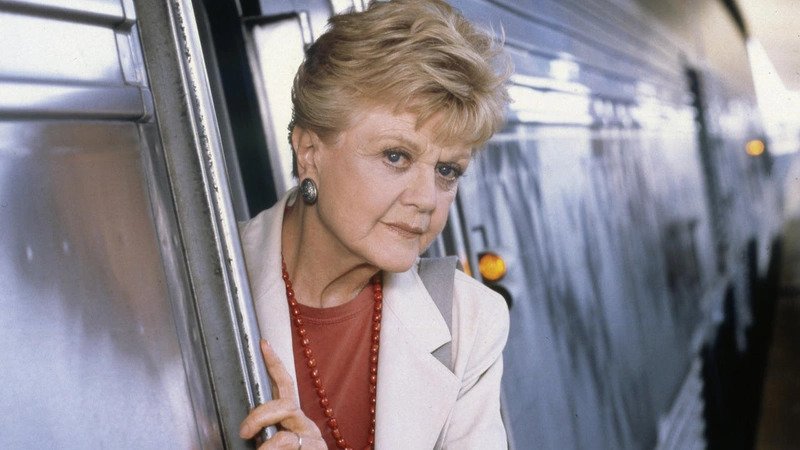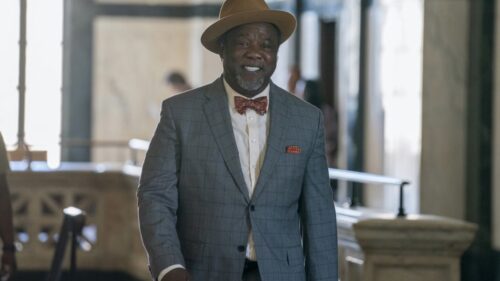In a career in the performing arts that spanned 80 years, Angela Lansbury kept herself fresh and ready to razzle-dazzle through all manner of career challenges and disappointments. There was a deep well of emotion in her that she could always draw from, and it only seemed to get deeper and become more mysterious as she got older. Watch her even in the most obscure television episode or movie and there will likely come a moment when Lansbury faces the camera and exposes all the knockout passion and yearning in her soul. She could convey a sense of enormous loss in a way that offered no relief or closure for that loss, and this was the wellspring of her creativity.
Lansbury lost her father as a young girl, which led her to retreat into a world of make believe. She left her native London for Hollywood with her mother Moyna Macgill when she was a teenager, and it was a chance meeting with playwright John van Druten at a party that led her to a film debut as a conniving maid in “Gaslight” (1944), for which she received an Oscar nomination for Best Supporting Actress. The following year, Lansbury received another nomination in that category for a vulnerable victim in “The Picture of Dorian Gray,” where she sings sweetly and memorably about a little yellow bird.

The impressive versatility that Lansbury displayed in these roles led to her first trouble in Hollywood, where she languished under contract to MGM, a studio that did not know how to cast her after she had been so good and so convincing as two such different characters. The sadism and undermining authority she had revealed as the maid in “Gaslight” was what MGM chose to emphasize, not the soulfulness she offered in “The Picture of Dorian Gray,” and so Lansbury found herself playing thankless character roles that were written as far older than her age.
After a very lean period in the mid-to-late 1950s, Lansbury once again attracted notice on screen with two contrasting supporting roles: the mother incestuously in love with her own son in “All Fall Down” (1962), in which she has several close-ups so intense that they stop the movie cold, and the villainous Mrs. Iselin in the political thriller “The Manchurian Candidate” (1962). Lansbury was only three years older than her on-screen son Laurence Harvey, but everything about her presence here reads as mature and viperish, and the killer instinct she uncovers for “The Manchurian Candidate” is so vivid that even recalling it feels like a punch in the stomach.

The turning point in Lansbury’s career came when she auditioned for and secured the starring role in the musical “Mame” in 1966, in which she became the toast of Broadway in many stylish yellow outfits and belted out the Jerry Herman songs in a high register that put across her brassy love of the spotlight. She won her first Tony for this role, but she was denied the movie version when Lucille Ball bought the rights to the musical for herself, and this was unfortunate all around.
Lansbury won a second Tony for “Dear World,” playing older again as a mad Countess, and the Jerry Herman score for that show contained a major and disturbing song about wanting to see only the bright side of life called “I Don’t Want to Know” that she delivered with all her sweet-and-sour intensity. She got a plum part in a Walt Disney musical called “Bedknobs and Broomsticks” (1971), but it was on stage where she really thrived in this period, winning a third Tony for her stage mother Rose in a revival of “Gypsy” in 1973. Surviving footage from that production and the cast recording let us see and hear that Lansbury makes Rose far warmer and more likable than most performers who have taken her on, from Ethel Merman to Patti LuPone, but this added dimension makes her Rose both more pitiable and more frightening.

At the end of the 1970s Lansbury received the role that she herself said she should be remembered for: Mrs. Lovett in Stephen Sondheim’s musical theater masterpiece “Sweeney Todd: The Demon Barber of Fleet Street.” The Cockney pie-shop owner Mrs. Lovett is “the villain of the piece,” according to Sondheim, and Lansbury makes her scrappy and pragmatic in the worst possible way. The way Lansbury’s Mrs. Lovett suggests using corpses for her meat pies to the vengeful Sweeney in the song “A Little Priest” is comic at the start, but as Lansbury sings it with her Sweeney, first played by Len Cariou and then by George Hearn, it has a gathering power and near-political menace, as if people at the bottom or in the lower depths like Mrs. Lovett are hungry for vengeance, and this material asks for all Lansbury has to give.
It was Sondheim who allowed Lansbury to go all the way with her darkest creative instincts and on the largest scale in “Sweeney Todd,” and she rose to that great chance and made her deepest mark with it. The popping eyes and quacking voice Lansbury had brought to so many lesser parts are the surface of her Mrs. Lovett, but down below is pure unthinking evil and hedonism and expedience, with a dash of sentimentality. She won her fourth Tony for “Sweeney Todd,” and the production was thankfully filmed for television so that this high-water mark for Lansbury is there in all its seedy glory for posterity.
Lansbury had the biggest success of her life on television as the author and sleuth Jessica Fletcher on the long-running TV show “Murder, She Wrote” all during the 1980s and into the 1990s. That comforting series was an institution in its time, always there on Sunday night after “60 Minutes” on CBS, and Lansbury adapted to what series television of that era needed: a smooth, sunny, and non-threatening presence, always there, and always solving every crime. This show made Lansbury a lot of money, and it gave many older actors who weren’t working too much one more moment in the spotlight.
Lansbury warbled the title song to “Beauty and the Beast” (1991) for Disney, and she continued to work on television, but the theater is where she always had her best opportunities. She won a fifth Tony for her Madame Arcati in “Blithe Spirit” in 2009, and in interviews Lansbury spoke longingly of wanting one more great role on film, but this was not to be. She won a special Academy Award, a special Tony, and in 2014 she was made a Dame by Queen Elizabeth II, and all of these honors were richly deserved. The movies never knew quite what to do with Lansbury, much to her chagrin, and television provided some fame and fortune, but it was on stage as “Mame” and in “Gypsy” and especially in “Sweeney Todd” that she displayed a talent of the highest order, happy to entertain, but even happier to instruct, to intimidate, or to open a wound that would never heal.












